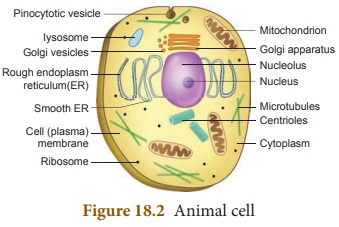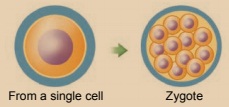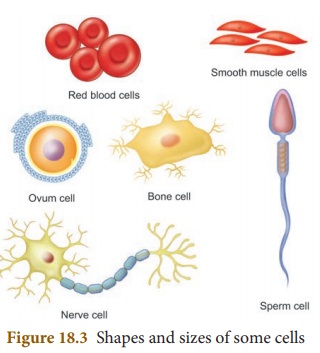Organisation of Life | Chapter 18 | 8th Science - Cells | 8th Science : Chapter 18 : Organisation of Life
Chapter: 8th Science : Chapter 18 : Organisation of Life
Cells
Cells
Cell is the structural and functional unit of life. Cells are often called as
‘building blocks of life’. The study of cells is called cell biology. Cells
consist of cytoplasm enclosed within a membrane, which contains many
biomolecules such as proteins and nucleic acids. Cells vary widely in shape and
size. There is a central spherical nucleus
and a variety of cytoplasmic living cell
organelles like the endoplasmic reticulum, mitochondria. golgi bodies,
centrioles, ribosomes, lysosomes, etc. , present in an animal cell. Each cell
organelle performs a specific function.

The size of cells varies in
different animals and they which are measured in units of micron (µm). One
micron is equal to 1/1000000 meter. The average cell size varies from 0.5 to 20
µm in diameter. The cells of bacteria are the smallest in size (1-2 µm). In
human body, the smallest cell is red blood cells (7 µm in diameter) and the
longest one is the nerve cell which reaches a length of about 90 - 100 cm.
Human egg (Ovum) is 100 µm in size. Among multicellular animals, the largest
cell is, egg of an ostrich. Mycoplasma with a diameter of 0.0001 mm is the
smallest bacterium.
Our body is developed
from a single cell called zygote. The Zygote undergoes continuous mitotic division
and forms the foetus consisting multitude of cells of different shape, size
and content. Foetal cells gradually attain change in structure and function.
This process is known as cell differentiation.

Shape of cells
Cells are of different shapes.
Normally they are correlated with their functions. Some cells are oval or
round, while certain others are elongated. Some are branched like the nerve
cell or a neuron. Some of our white blood cells are amoeba like with irregular boundaries.
Activity 1
Boil a hen’s egg and
remove the shell. What do you observe? A white material surrounds the yellow
part. White material is albumin which solidifies on boiling. The yellow part is
yolk. It is a part of the single cell. You can observe this single cell without
any magnifying devices.

Related Topics